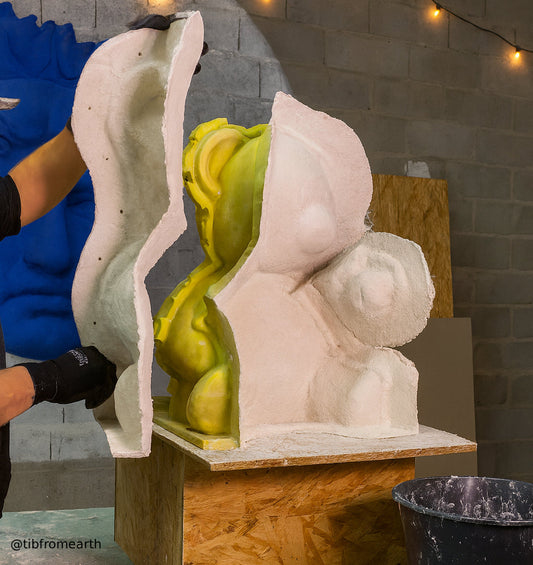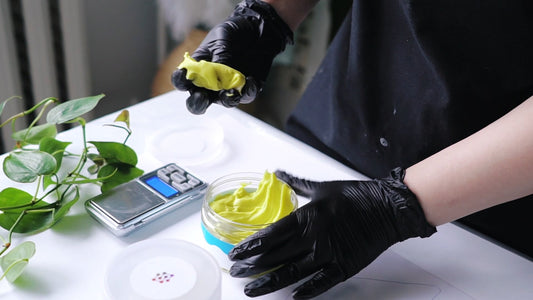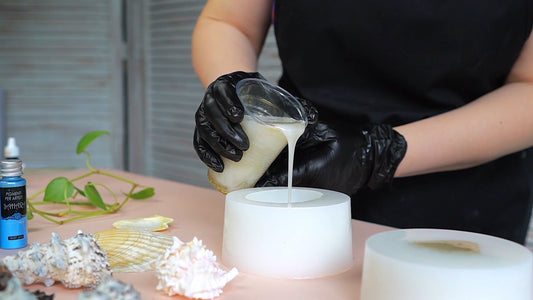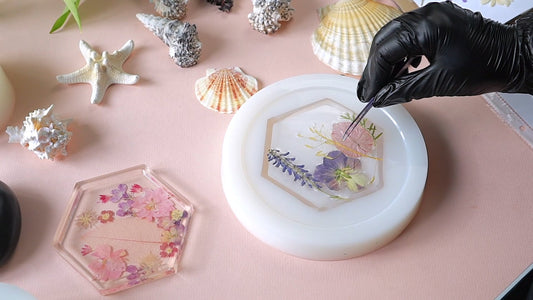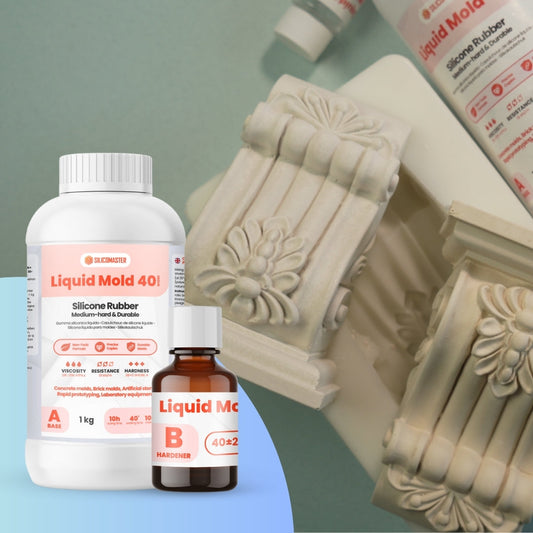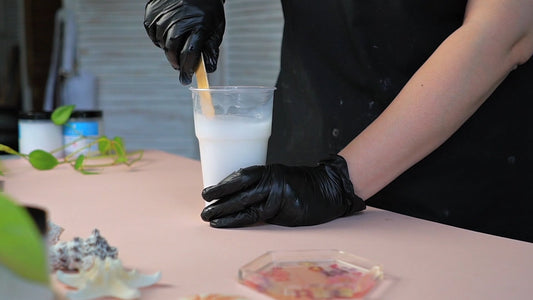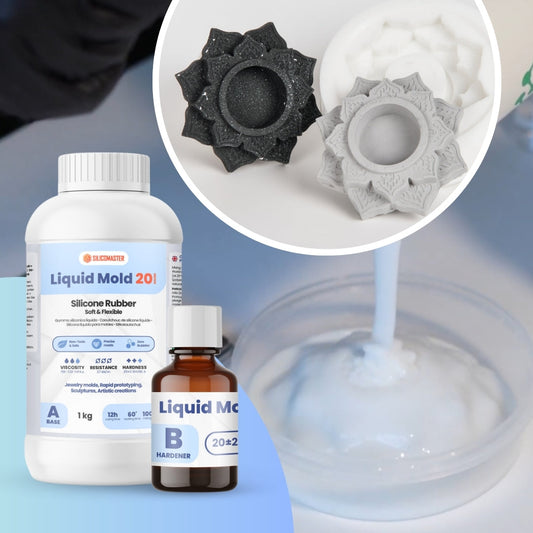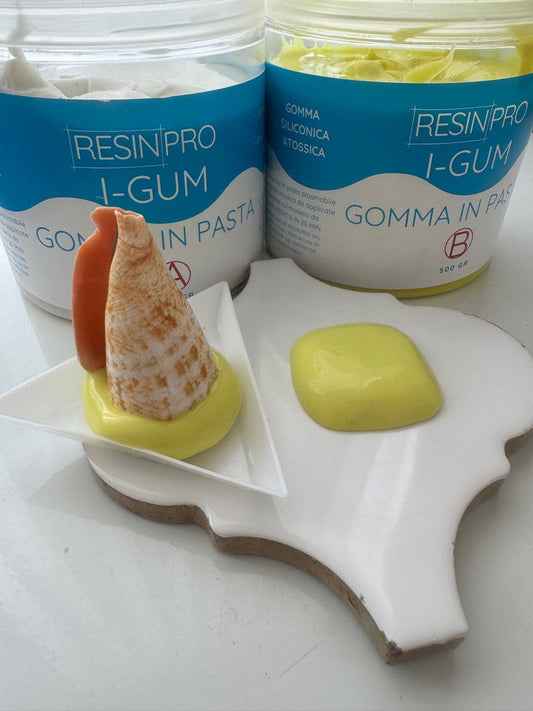I was about to make my first silicone mould for resin. I had the idea, the design… but once I got to the shop, I found myself in front of a shelf full of different types of silicone: some more liquid, others thicker, strange names on the labels promising miracles.
Which one was the right choice?
If you've ever felt confused too, keep reading: here's a practical guide to choosing the right silicone for craft moulds, based on the material you'll be casting.
Spoiler: not all silicones work for everything.
🔹 If you’re using epoxy resin, don’t improvise
Epoxy resin is a demanding material. You need a silicone with medium viscosity, so it can reach all the details without being too runny and forming bubbles. It also has to withstand the heat generated during curing.
👉 What should you use? A silicone clearly marked as compatible with epoxy resin. This will help you avoid nasty surprises like tearing or warping during demoulding.
For example: to make a decorative tray or a piece of jewellery with embedded flowers, a silicone with medium Shore hardness is perfect – flexible yet stable.
🔹 Working with soap or wax? You need flexibility
In this case, the keyword is: highly flexible silicone. It will help you avoid breaking fine details when you remove the piece.
✔️ Choose a silicone labelled for cosmetic or craft use.
If you're working with wax for decorative candles, the silicone must withstand temperatures above 50–60 °C. A short curing time is a bonus.

Liquid Mold 5 – Ultra-Soft Silicone for Moulds with Fine Details

Pure Mold 10 – Silicone for Crafting and Fine Details

Pure Mold 20 – Universal Silicone for Sculptures and Artistic Objects
🔹 For plaster or cement, think durability
These materials are abrasive. Choose a silicone with a high Shore hardness (above 30–40) to prevent the mould from wearing out after just a few uses.
Perfect for pots, handmade tiles, and decorative figures. The curing time is longer, but it’s worth it.

Pure Mold 30 – Ideal Silicone for Moulds in Concrete, Plaster, Mortar, and Decorative Stones

Liquid Mold 30 - Silicone for Durable Moulds and Heavy Materials

Liquid Mold 40 - Silicone for Industrial and Long-Lasting Moulds
🔹 Not sure what type of silicone you have?
Read the label carefully: does it mention use for crafts, compatibility with resin, soap or cement? Does it specify Shore hardness or curing time?
If none of these are indicated, it’s better not to risk it for detailed projects.
✅ Quick Checklist: How to Choose the Right Silicone
-
What are you casting? (Resin, soap, plaster, wax...)
-
Do you need flexibility or wear resistance?
-
Does the project have lots of fine details?
-
In a hurry? Choose fast-curing silicone.
-
Still unsure? Refer back to this guide.
❓ Frequently Asked Questions
What kind of silicone is used for mould making?
→ RTV silicone, which cures at room temperature. There are two main types:
-
Condensation-cure: more affordable, mixed at 5–10% catalyst ratio
-
Addition-cure: more stable and accurate, ideal for resin
What Shore hardness should I choose?
-
Resin: Shore 20–30
-
Soap/wax: Shore 10–20
-
Cement/plaster: Shore 40+
How to prevent resin from sticking to the mould?
→ Use a release agent: either a dedicated spray or technical-grade petroleum jelly.
Can I use bathroom silicone?
→ No. 100% acetic bathroom silicone is unsuitable — it has a strong odour, doesn’t cure properly, and may produce bubbles.
There are 3 main types of silicone for mould making:
-
Condensation-cure silicone
-
Addition-cure silicone
-
Paste (thixotropic) silicone – great for vertical surfaces.


